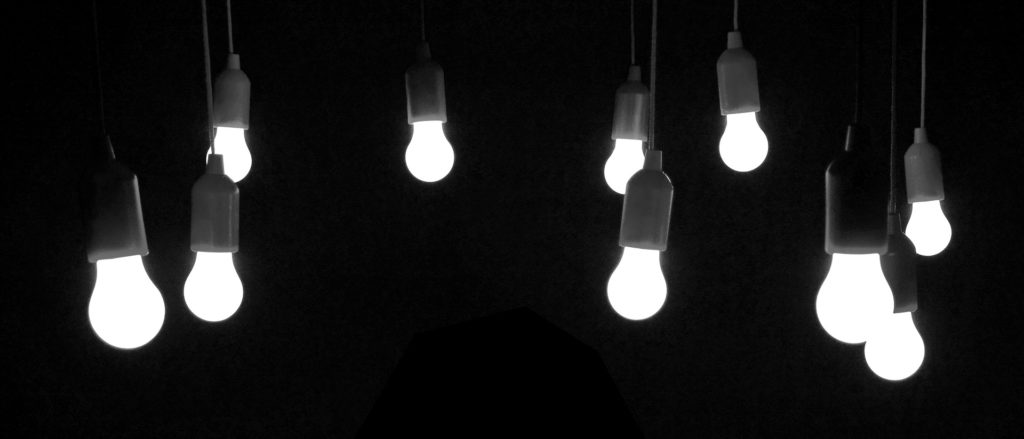Lighting is one of the first places to reduce your carbon footprint and to look for energy savings; also one of the easiest and quickest ways to save money on your energy bills. Lights are the most visible and an easy source to recognize as an energy user. With a walk through the home, you can develop a quick inventory of bulbs in use. You then simply plug a few numbers into an equation, simple math, and no complex cost-recovery analysis. The Bulbs Everyone is familiar with the older incandescent bulbs, much better as heaters than a light bulb. Almost 90% of an incandescent light bulb’s energy becomes heat, leaving 10% for actual lighting, very inefficient. There are a number of types of bulbs on the market and perhaps you have some of these in your home. These are listed from least efficient to the most efficient: Incandescent, halogen, cold cathode ray tubes (CCFLs), compact fluorescent (CFLs), tube fluorescent, and of course the most efficient, LEDs. Wattage is the measurement indicating the amount of energy required to produce light.
Bulb Facts
The second indicator to consider in purchasing bulbs is the ‘lumens’ of a bulb, the brightness of the light. A third consideration whether the bulb is warm or cool. Warm lights are better suited for the den, TV room, or bedrooms. Cooler lights work best in places like the home office, kitchen, utility room, or garage. Daylight bulbs in a TV room can be overwhelming, leaving you feeling like living in a failed science experiment. This color temperature is the Kelvin rating of the bulb. Most homes will include bulbs in the 2700k to 3000k range. Daylights at 6000k are better suited to rooms used for tasks, a utility room or a workbench in a shop.
Lighting Math
The numbers the utility company measures our energy consumption by the watt, so, reducing lighting wattage is important. How do we figure out the savings by replacing every bulb in our home, simple math. The equation is as follows; Watts x Hours/day x Days/Yr = Total Watts / kWh (1000) x Electric Rate = Total Cost For example let us use a 60w incandescent bulb for comparison: 60w x 10 hrs/day x 365 days = 237,250 total watts / 1000 x $0.064 = $14.01 Now let us look at an LED bulb with the same numbers: 8.5w x 10 hrs/day x 365 = 31,025 / 1000 x $0.064 = $1.98 That represents a savings of $12.03. Well that is pretty visible. The average home has average of 20-24 bulbs which translates into $240.60, or with LED $54.90. LED bulbs will very quickly return on their investment. Leaving the lights on has a different meaning now? The other missing consideration in this equation is the life of the bulb, incandescent bulbs are notorious for their short life (1000 hrs), remember, they are better heaters than a light source. Compact fluorescent bulbs are better but no match for the LED bulb, and some of them have a 50,000 hour rated lifetime. When we are comparing incandescent to LED; the incandescent bulbs will need to be changed many times, this alone costs more than an LED bulb.
Additional Savings
Another way to save energy beyond changing your bulbs is by making use of dimmers, another is to install motion sensors. Leaving the lights on is costly, even more when nobody is in the room. Now you have the basics on how to calculate the cost of running a light and the energy used. Remember to include this energy reduction into your carbon footprint. Have a question about lighting?
Sustainability is “Meeting the needs of the present generation without compromising the ability of future generations to meet theirs” From: Our Common Future

